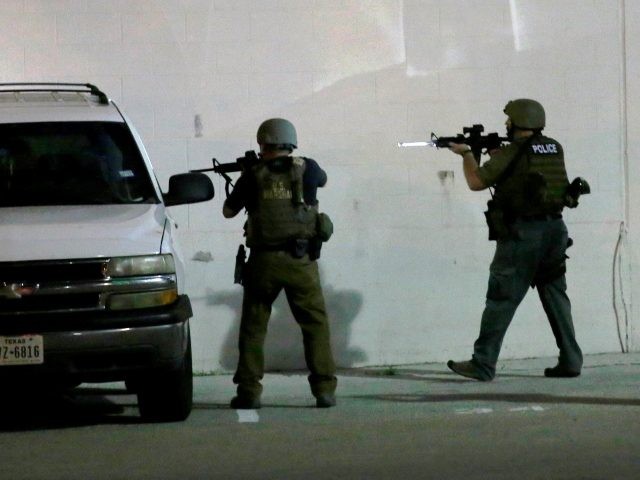The National Bureau of Economic Research (NBER) just released a study showing “no racial differences” in officer-involved shootings (OIS).
NBER did find differences in the application for non-lethal force but made clear that neither the “raw data” nor an expanded view–when “contextual factors are taken into account”–demonstrate “racial differences” in an officer’s use of lethal force.
NBER used the following police departments to gather their information: Boston, Camden, Austin, Dallas, Houston, Los Angeles, and six Florida counties. They then looked at everything from brand of sidearm that police in those departments carry–i.e., Glock, Smith & Wesson, etc.–to the round they carry–i.e., 9mm, .40 S&W, etc.–to the location of the sidearm versus the location of less-than-lethal force. In other words, which is closer to the dominant hand–the sidearm or the taser?
They took OIS information from the aforementioned police departments and overall arrest records, as there are approximately 100,000 arrests a year in Houston alone, and put these and other factors into mathematical equations for ascertaining hard figures on occurrences of OIS. These details were “merged with data on officer demographics and suspect’s previous arrest history to produce a comprehensive incident-level dataset on interactions between police and civilians in which lethal force may have been justified.”
These findings were juxtaposed with less-than-lethal uses of force, which NBER compiled in a similar fashion.
NBER then observed that the evidence discovered in empirical data is nothing like the paradigm presented by highly emotionalized cell phone videos that news media seize and highlight.
NBER reported:
Given the stream of video “evidence,” which many take to be indicative of structural racism in police departments across America, the ensuing and understandable outrage in black communities across America, and the results from our previous analysis of non-lethal uses of force, the results displayed in Table 5 are startling.
They then sum up Table 5 by saying that “Blacks are 23.8 percent less likely to be shot by police, relative to whites. Hispanics are 8.5 percent less likely to be shot but the coefficient is significantly insignificant.”
In summary, NBER reports:
On the non-lethal uses of forces, there are racial differences–sometimes quite large–in police use of force, even after accounting for a large set of controls designed to account for contextual and behavioral factors at the time of the police-civilian interaction. … Even when officers report civilians have been compliant and no arrest was made, blacks are 21.3 percent more likely to endure some form of force. Yet, on the most extreme use of force–officer-involved shootings–we are unable to detect any differences in either the raw data or when accounting for controls.
AWR Hawkins is the Second Amendment columnist for Breitbart News and political analyst for Armed American Radio. Follow him on Twitter: @AWRHawkins. Reach him directly at awrhawkins@breitbart.com.

COMMENTS
Please let us know if you're having issues with commenting.